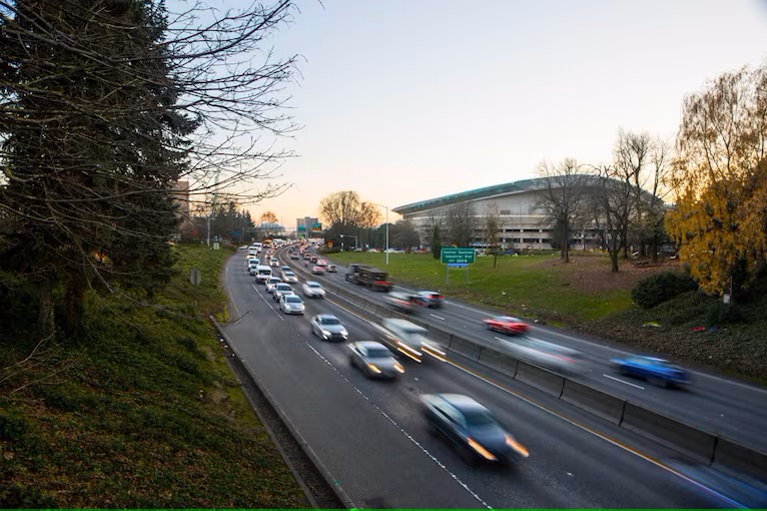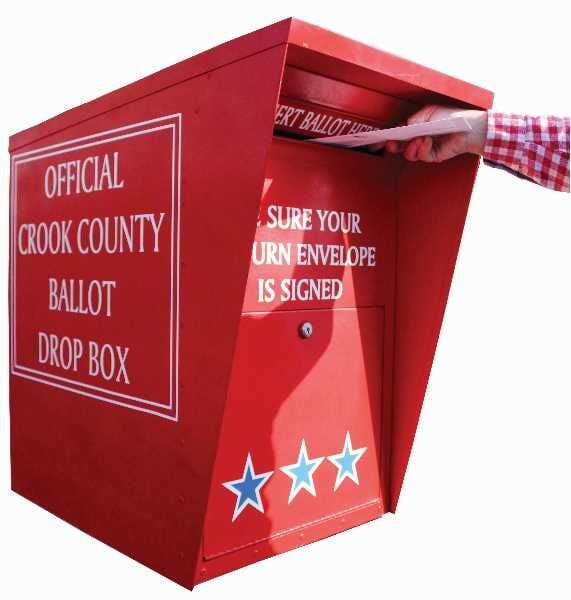Opinion: Oregon should bypass California’s stalled Clean Trucks program and steer its own into the fast lane
Published 1:13 pm Tuesday, May 27, 2025

- Interstate 5 runs through the Rose Quarter in 2017. A planned project that would widen and cap I-5 is now expected to cost more than $2 billion. (Submitted by Bradley W. Parks)
California has set ambitious goals for EV truck adoption with its Advanced Clean Trucks rule, which imposes steeply escalating statewide EV sales quotas on truck manufacturers over the next decade. However, the state only generates about 2% of global transportation-related GHG emissions, so its initiative will not have a significant climate impact unless ACT motivates national- and global-scale action on truck electrification.
ACT has so far been adopted by only 10 states, of which six currently have legislation pending to delay ACT implementation. This includes Oregon’s HB3119, which provides that “the Department of Environmental Quality may not implement or enforce the Advanced Clean Trucks regulations … before January 1, 2027.” Oregon cannot simply develop its own vehicle air pollution restrictions because Section 177 of the federal Clean Air Act prohibits states from adopting such emission standards that differ from federal standards unless they are “identical to the California standards.”
One factor stymieing ACT implementation in Oregon is the lack of high-power EV charging infrastructure, without which it is infeasible for Oregon to keep up with California’s fast-track ACT timeline, especially for heavy-duty, long-haul trucks. ACT provides a variety of flexible compliance mechanisms such as credit trading and banking to ease the regulatory burden, but there is no guarantee these would suffice to meet the ACT’s required schedule of EV trucking sales quotas. And delaying ACT implementation likely would run afoul of Section 177’s identicality requirement.
In response to ACT-induced disruption in the Oregon market for large trucks, Gov. Tina Kotek recently directed DEQ to “quickly develop a solution for Class 7 and 8 trucks that considers the current circumstances while still maintaining the integrity of the ACT program for all other classes.” One option being considered is “credit pooling” (interstate trading of compliance credits).
Credit pooling would, in effect, allow California and Oregon to comply with different ACT standards: Oregon would effectively buy the right to relax its ACT standard by paying California to attain a more stringent standard. It’s not clear that this scheme would be Section 177-compliant but, in any case, we think it would not make sense to require Oregon’s trucking industry to, in effect, pay a penalty fee to California for not complying with an infeasible, California-imposed regulatory standard. Trading revenue would be better spent in-state to support Oregon’s own trucking industry rather than subsidizing California’s industry.
The Section-177 identicality requirement ensures that a manufacturer selling standard-compliant vehicles in one state can sell the exact same vehicles in other states. But requiring identical sales percentages between states only makes the regulations more burdensome for manufacturers, not less so. The EPA could adopt a sensible Section-177 interpretive framework that allows states to develop their own ACT implementation timelines according to their unique circumstances (a “timeline” would not itself be construed as a “standard”), but the Trump EPA will not likely be amenable to such accommodation.
However, Oregon could reform its ACT regulations to circumvent federal preemption in a way that would be more economically efficient and impactful than California’s regulation even without the encumbrance of Section 177. Rather than employing an inflexible standard to drive unpredictable and volatile market trading prices, the regulation could employ stable pricing incentives (EV subsidies financed by fees on internal-combustion vehicles) to drive EV adoption at a scale and pace that the market can tolerate. Price stability would be conducive to long-term investment in truck electrification, and program ambition would not need to be restrained by predictive uncertainty.
This policy approach is exemplified by Germany’s Feed-in Tariff (FIT) program in the early 2000s, which triggered an explosive expansion of the global solar power market led by Germany in the 2004-2014 time frame. The program did not impose mandatory sales targets and timelines on solar manufacturers; it just offered them a guaranteed price (initially 45¢/kWh) for renewable power. (A price incentive is not a “standard” and would hence not be governed by Section 177.)
A financial incentive program could constitute one element of a targeted industrial policy (including charging infrastructure, grid capacity, battery technology, etc.) that leverages the investment potential of truck electrification to gain the support of the trucking industry and establish a market-based incentive framework for nationwide truck electrification. Oregon should take the lead in developing a policy foundation for truck electrification that would entirely circumvent federal preemption and could extend to national and global scope. Indeed, there would be no other option to federal regulation if current Congressional efforts to axe California’s clean truck rules succeed.
Ken Johnson is affiliated with the Climate Reality Project: Silicon Valley Chapter and writes on a variety of climate policy topics.
Adam Sweeney is the co-director of the Climate Reality Project: Silicon Valley Chapter’s Legislation and Public Policy Committee.
Dan Galpern is executive director of the Eugene-based Climate Protection and Restoration Initiative.
This article was originally published by Oregon Capital Chronicle and used with permission. Oregon Capital Chronicle is part of States Newsroom and can be reached at info@oregoncapitalchronicle.com.





